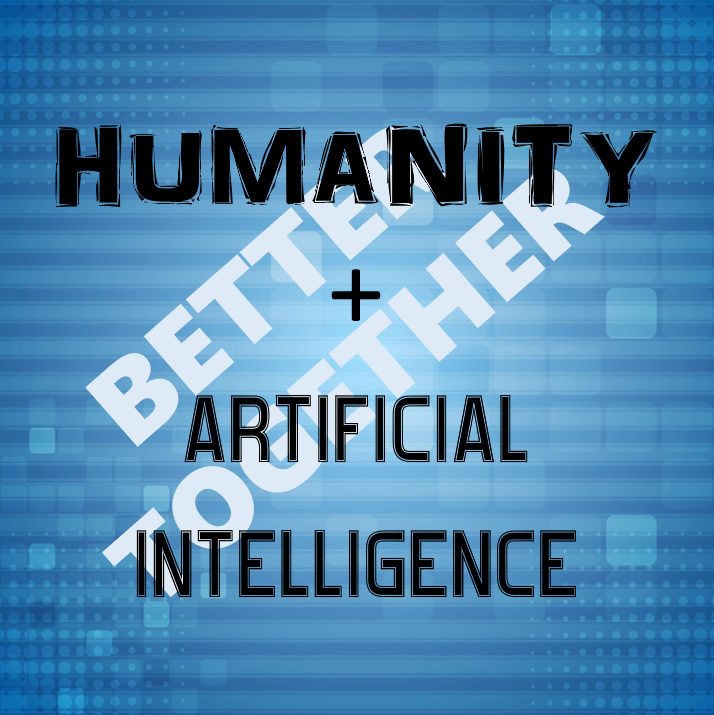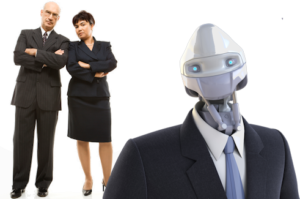Three of the top concerns during the novel coronavirus pandemic have been keeping people safe, minimizing the effects of high unemployment, and preparing for an economic recovery. Allen Bernard (@allen_bernard1), a freelance business writer and journalist, reports Forrester analysts fear the latter two concerns might be in conflict. He writes, “As the world slowly comes to terms with the COVID-19 pandemic and begins to reopen for business, the adoption of automation and autonomous technologies by businesses and manufacturers is expected to accelerate as companies look for ways to protect their organizations from future pandemics and other predictable ‘Gray Swan’ events that are extremely rare but still likely to occur, according to a new report from Forrester.”[1] The report states, “Enterprises across the world are watching as large segments of their human workforce and human-driven value chains are suspended. As we emerge from the crisis, firms will look to automation as a way to mitigate the risks that future crises pose to the supply and productivity of human workers. They will invest more in cognitive capabilities and applied AI, industrial robotics, service robots, and robotic process automation (RPA).”
Many analysts are concerned recovery from the pandemic could take a long time and many lost jobs may never return. Journalist Angus Loten (@angusloten) reports, “Companies are expected to ramp up automation in the aftermath of the coronavirus outbreak as employers seek to cut costs and boost productivity, industry analysts say. Some of these cost-cutting efforts will involve the use of artificial-intelligence-powered robotic software developed to replace workers by tackling repetitive tasks, such as handling routine contact-center calls and processing employee-benefits forms. But physical robots also will be enlisted to stock grocery-store shelves, disinfect hotel rooms and perform other manual labor that carries a heightened risk of infection.”[2] According to Bernard, there has been a pattern of increased automation following a recession. He writes, “Following recessions in the 1970s and early 1980s, jobs came back within months. But, the after the next three recessions, between 1991 and 2009, it took up to two years for jobs to return. This was caused, at least in part, by investments in automation.” If the global economy is to get back on track, the recovery cannot be a jobless one.
Humans and machines work better together
It would be silly to argue that jobs aren’t going to be lost to artificial intelligence (AI) and automation. Nevertheless, Ben Shneiderman, a University of Maryland computer scientist, argues that blindly automating tasks with computers can be both stupid and dangerous.[3] Shneiderman believes designers should focus on a new mantra, designing computerized machines that are “reliable, safe and trustworthy.” John Markoff (@markoff) asserts, “It is a warning that’s likely to gain more urgency when the world’s economies eventually emerge from the devastation of the coronavirus pandemic and millions who have lost their jobs try to return to work. A growing number of them will find they are competing with or working side by side with machines.”[4]
Markoff goes on to note, “The conflict between human and computer control is at least as old as interactive computing itself. The distinction first appeared in two computer science laboratories that were created in 1962 near Stanford University. John McCarthy, a computer scientist who had coined the term ‘artificial intelligence,’ established the Stanford Artificial Intelligence Laboratory with the goal of creating a ‘thinking machine’ in a decade. And Douglas Engelbart, who invented the computer mouse, created the Augmentation Research Center at the Stanford Research Center and coined the term ‘intelligence augmentation,’ or I.A.” For his part, “Dr. Shneiderman has challenged the engineering community to rethink the way it approaches artificial intelligence-based automation. … With certain exceptions such as automobile airbags and nuclear power plant control rods, he asserts that the goal of computing designers should be systems in which computing is used to extend the abilities of human users.”
Frank van Harmelen (@FrankVanHarmele), a professor in Information Illustration & Reasoning on the Division of Artificial Intelligence on the Free College of Amsterdam, believes human/machine collaboration is best path to pursue in the years ahead. He explains, “Human intelligence may be totally different from artificial intelligence. You shouldn’t attempt to exchange one for the opposite; it’s like attempting to push a spherical pin right into a square gap.”[5] He believes the best future is one in which designers move “away from the function of AI as automation, and in the direction of AI as cooperation.”
The augmented workforce
One area of artificial intelligence that was specifically developed with augmentation in mind is cognitive computing. Former IBM CEO, Ginni Rometty (@GinniRometty), explained, “[When IBM coined the term cognitive computing] the idea was to help you and I make better decisions amid cognitive overload. That’s what has always led us to cognitive. If I considered the initials AI, I would have preferred augmented intelligence. It’s the idea that each of us are going to need help on all important decisions.”[6] Vivek Kumar believes the future workplace will be characterized by human/machine collaboration. He explains, “The relentless growing connectivity and cognitive technologies are making it possible where humans and machines can work side-by-side at a shared workplace, enhancing the abilities of the human workforce. Today, as the workplaces are evolving to a flexible workforce driven by technology advances, software, automation, IoT, robotics, and artificial intelligence, among others, almost every job in every discipline is being revived.”[7]
As companies look to emerge from the pandemic, they should consider a people-first approach that highlights augmentation rather replacement of workers. Kumar explains, “With the introduction of new technology, companies now have opportunities to power the workplace and augment their workforce to perform tasks effortlessly. The increasing proliferation of intelligent automation into the workplace is taking away a lot of tedious, repetitive works that used to overwhelm workflow, freeing up employees to focus on more valuable tasks. This gives the birth of the augmented workforce that involves a blend of human workers and technology. Unlike traditional manual jobs, the augmented workforce has the ability to drive great efficiency.”
Concluding thoughts
A jobless recovery wouldn’t really be much of recovery. Frank Chen (@withfries2), a Partner at Andreessen Horowitz, believes the scare-mongering stories about AI making humans redundant promote a false future. He explains, “The counter-narrative I want to offer to the mainstream, front page accounts is that with careful, thoughtful, empathic design, we can enable ourselves to live longer, safer lives. We can create jobs where we are doing more creative work. We can understand each other better.”[8] Chen is thoroughly convinced humanity is better off because AI is maturing. He concludes, “It’s now up to all of us together to harness this tremendous energy to benefit all humanity. With thoughtful, careful, and compassionate design, we can really make ourselves more creative, better decision makers, live longer, gain superpowers in the physical world, and even understand each other better.” It’s important to note that Chen doesn’t believe this bright future will emerge on its own. It will take “thoughtful, careful, and compassionate design.” We should keep that in mind as we prepare to emerge from the current pandemic.
Footnotes
[1] Allen Bernard, “Forrester: Automation could lead to another jobless recovery,” TechRepublic, 8 May 2020.
[2] Angus Loten, “Businesses Expected to Lean on Automation for Recovery,” The Wall Street Journal, 20 May 2020.
[3] John Markoff, “A Case for Cooperation Between Machines and Humans,” The New York Times, 21 May 2020.
[4] Ibid.
[5] Frank van Harmelen, “The next step for artificial intelligence: full-fledged interaction between man and machine,” AI Development Hub, 6 June 2020.
[6] Megan Murphy, “Ginni Rometty on the End of Programming,” Bloomberg BusinessWeek, 20 September 2017.
[7] Vivek Kumar, “Augmented Workforce: The Emerging Trend Towards the Future of Work,” Analytics Insight, 2 July 2020.
[8] Frank Chen, “Humanity + AI: Better Together,” Andreessen Horowitz, 22 February 2019.





